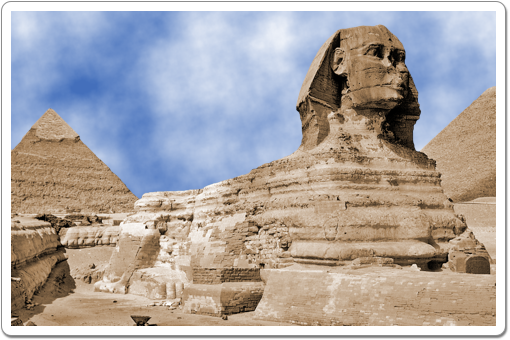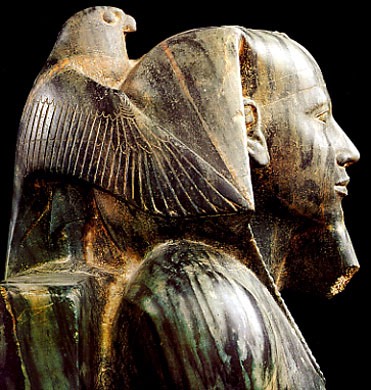Location and date
The Great Sphinx at Giza, one of the many monuments that we have come to consider an icon of the Ancient Egyptian civilisation, lies northwest of the Valley Temple of the Pyramid Complex of Khefren.

The Great Sphinx of Giza, with Khefren's pyramid in the background, to the left.
Right in front of the Sphinx, and directly north of the Valley Temple, an open structure was erected. As this structure appears to be very closely related to the Sphinx, archaeologists consider it to be the Sphinx Temple, but the precise function of this unique structure remains unclear to this date.

Click or tap this map of the Sphinx and the Sphinx Temple to learn more.
Source: Lehner, Complete Pyramids, p. 129.
A close geological study of the sphinx and the nearby temples has revealed that the large blocks which were used to build the Valley Temple of Khefren's complex were most likely quarried from the layers that run through the upper part of the Sphinx's body.
The core blocks that were used to build the Sphinx Temple, on the other hand, came from just below the chest height of the Sphinx's body.
This means that the Sphinx was sculpted at almost the same time as when the Valley Temple and temple in front of the Sphinx were built. As the Valley Temple was built as part of Khefren's Pyramid Complex, it thus stands that the Sphinx was sculpted out of the rock during Khefren's reign as well.
Two views of the sphinx: recent and after extensive restoration (left), and captured in an early 20th century picture (right).
Source for the picture to the right: Free Historical Stock Photos.
Regardless of the reasons why the Sfinx and it temple were built, later generations would consider it to be a statue of the god Harmakhis, Horus at the Horizon, or Horus as a solar god, as is shown by the Dream Stela, erected in front of the Sfinx by Thutmosis IV of the 18th Dynasty. Although it is possible that the Sfinx was associated with Harmakhis by later generations, it is probable that this was already the case at the time this enigmatic and emblematic statue was created.
